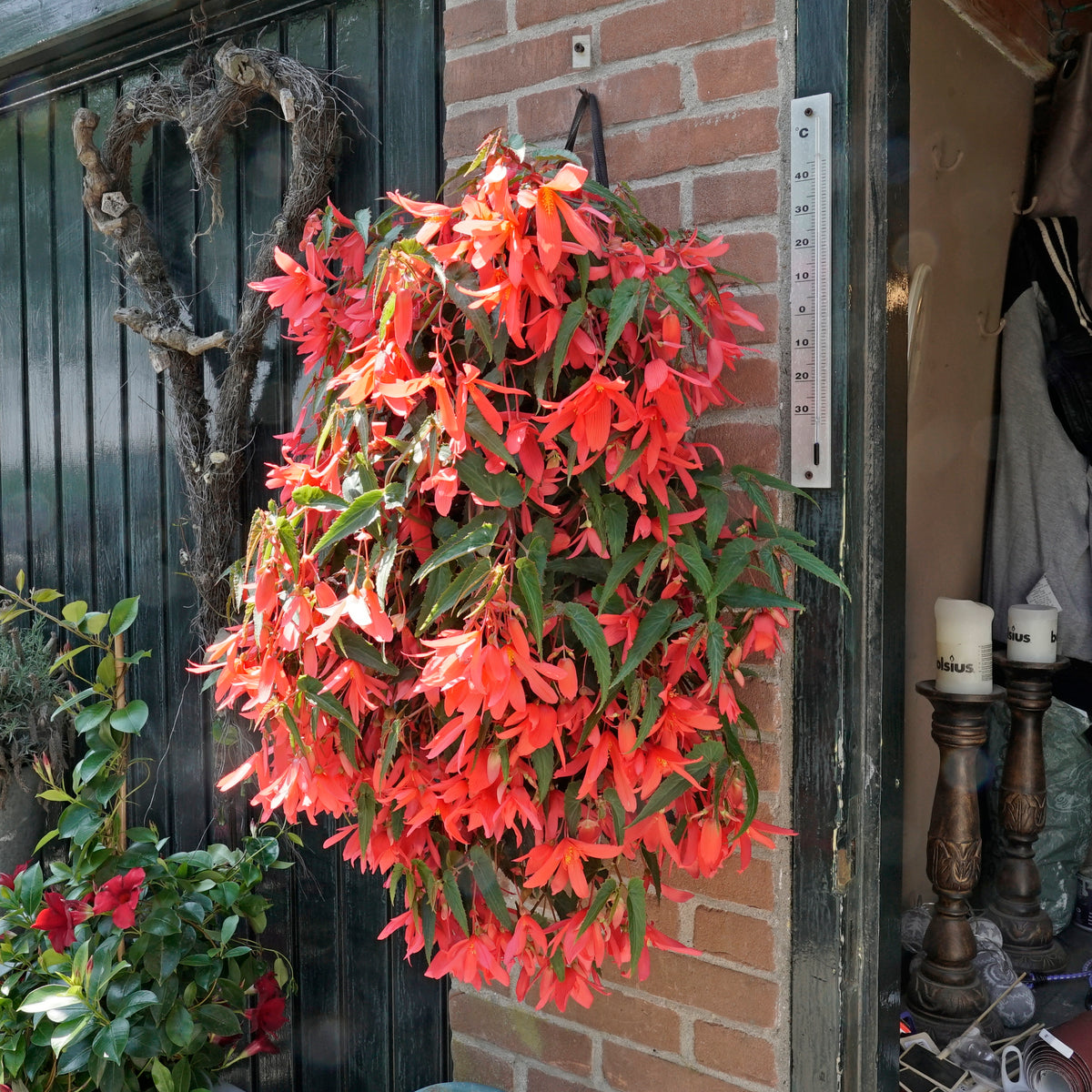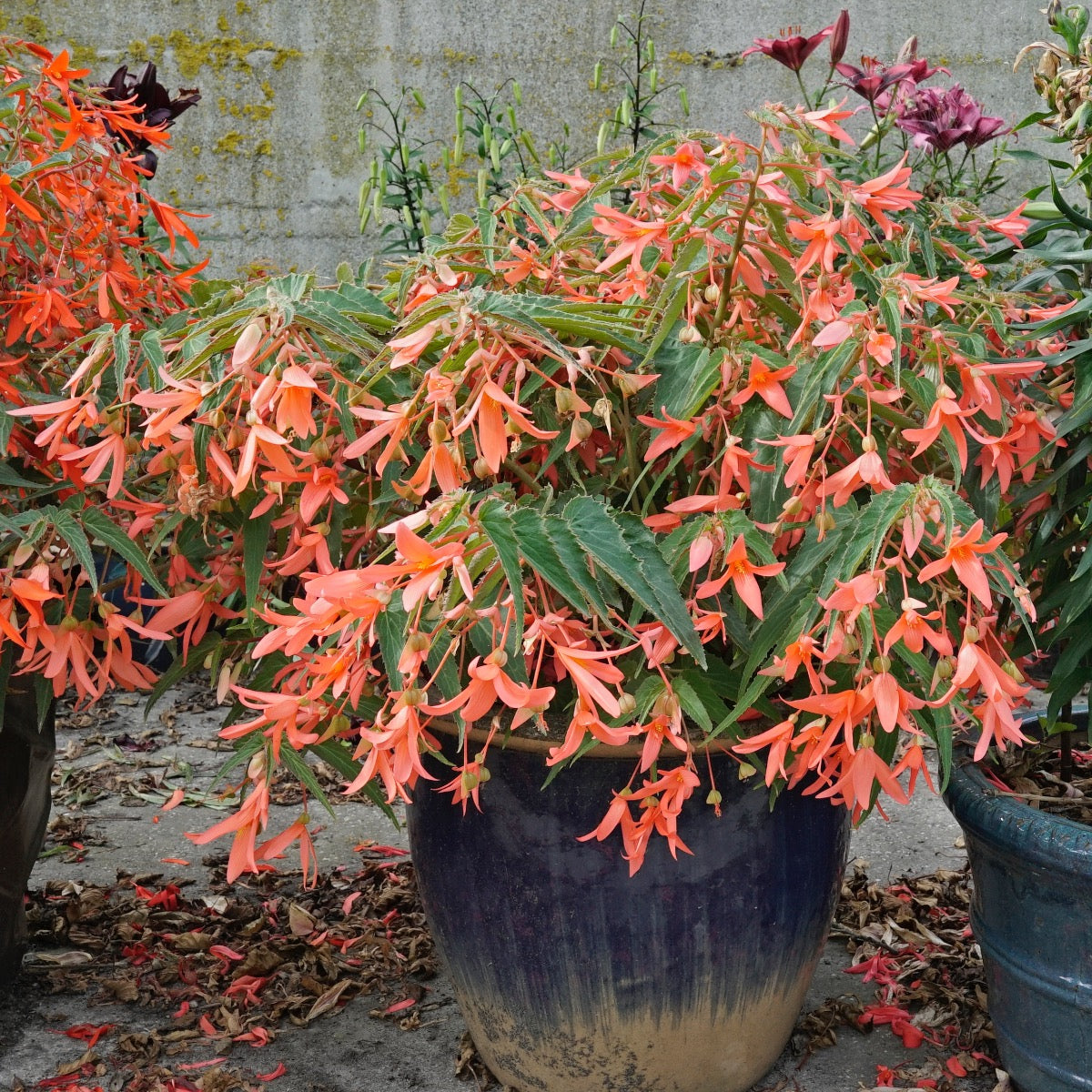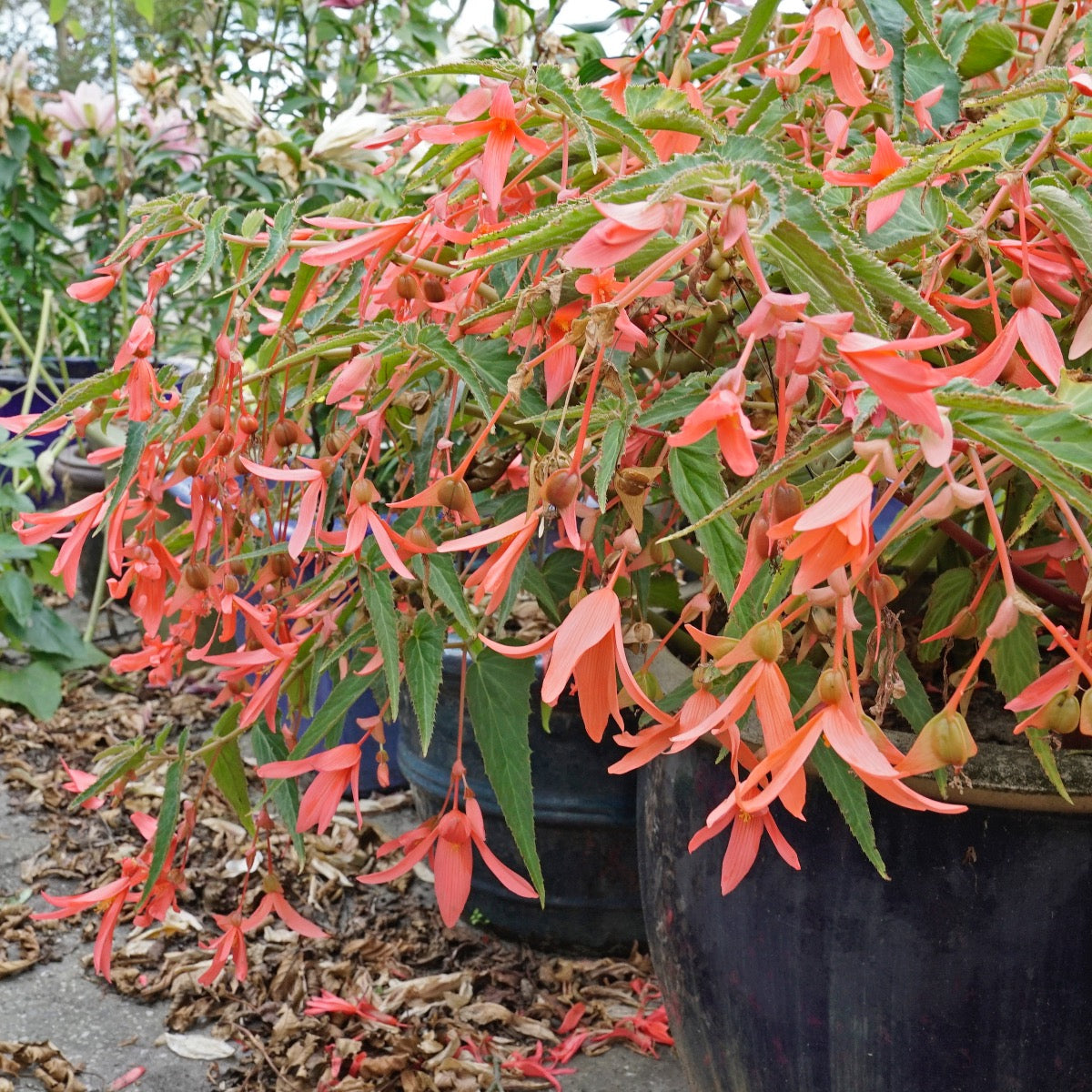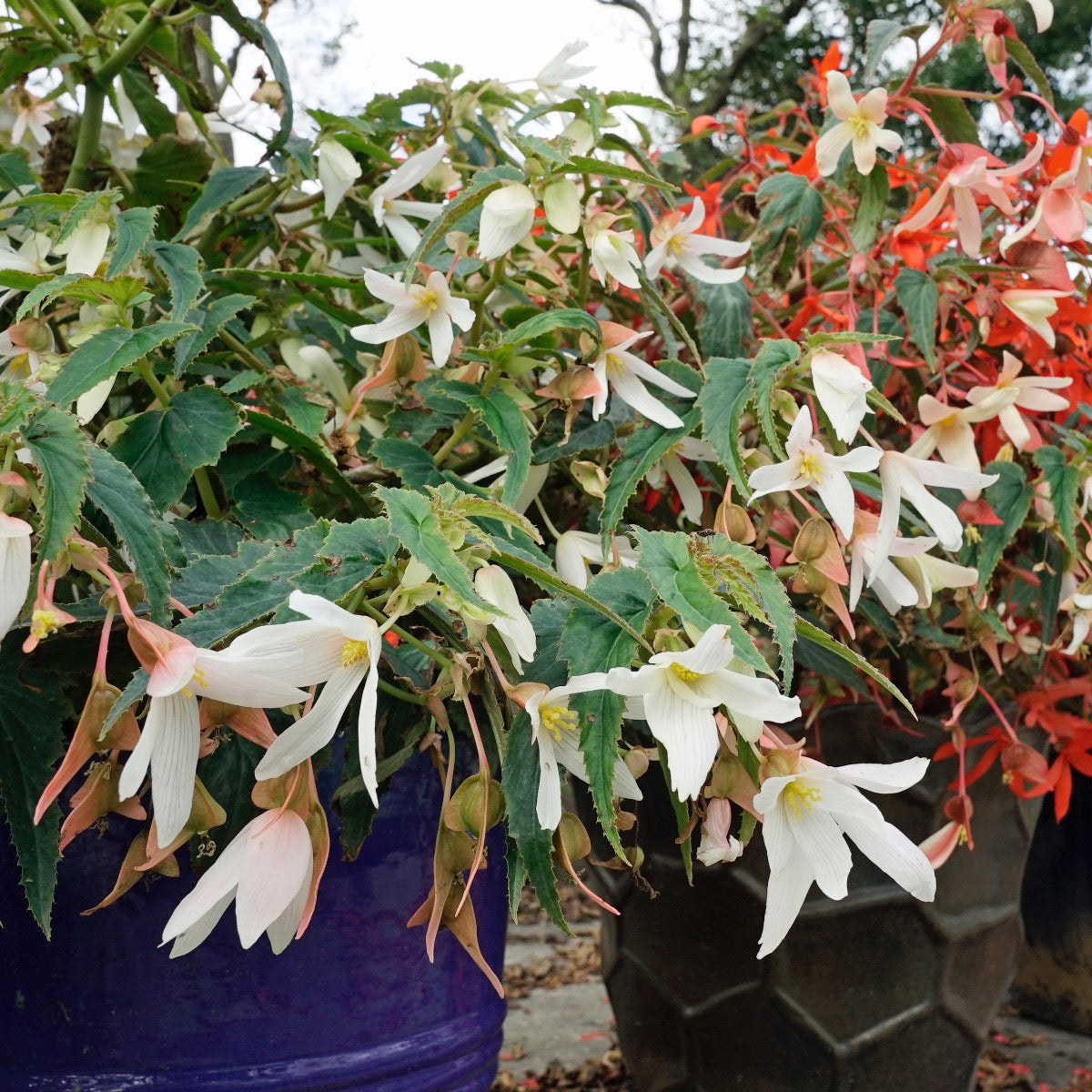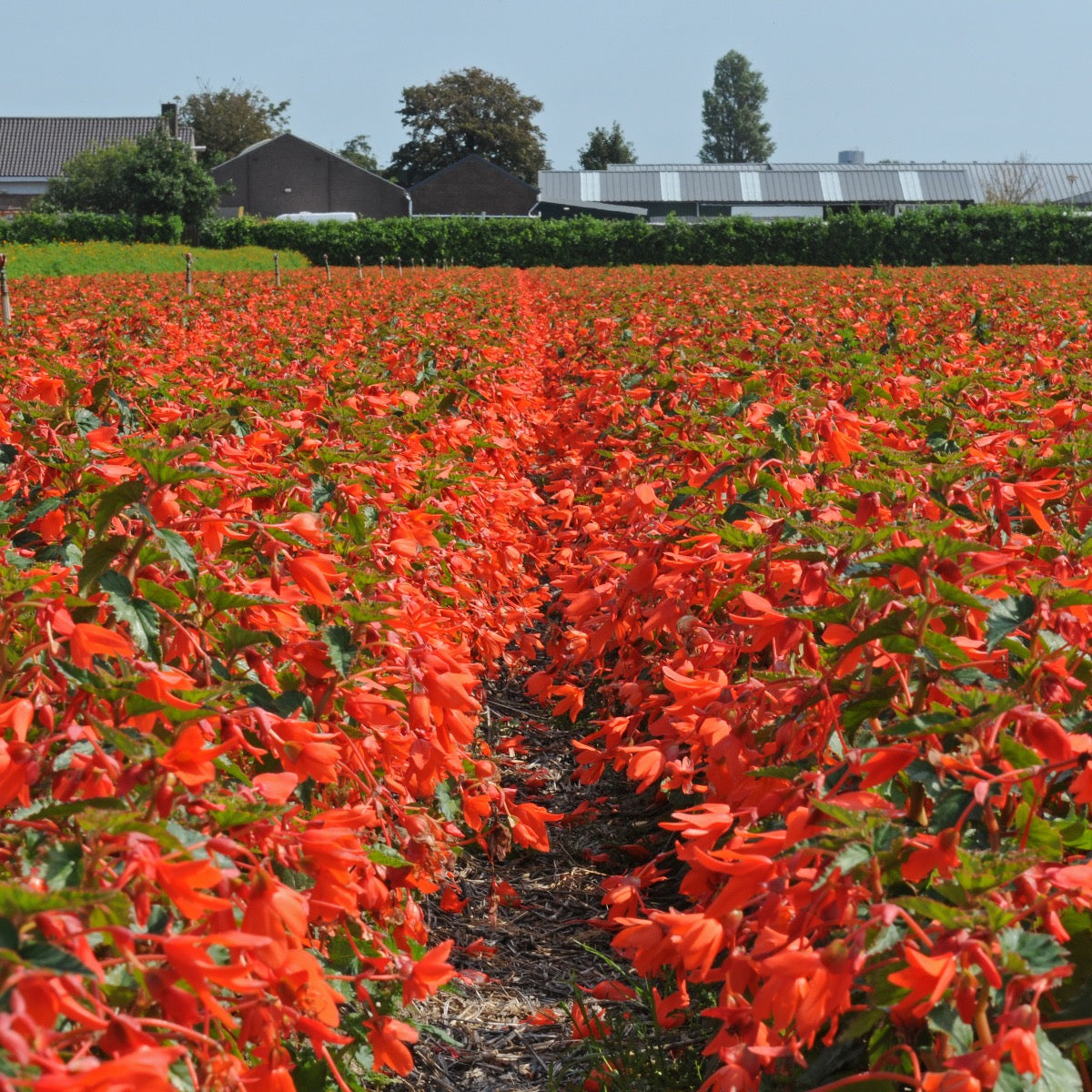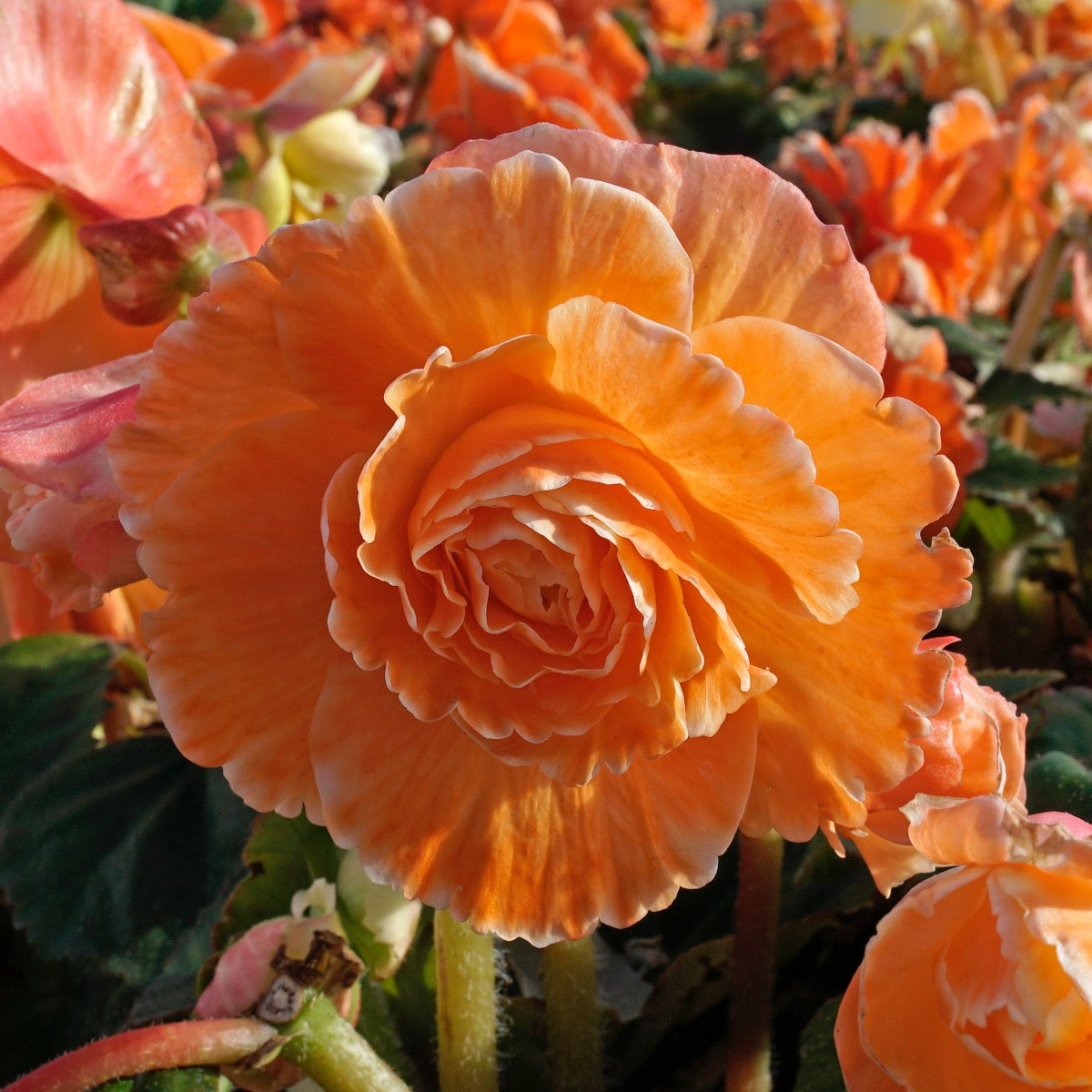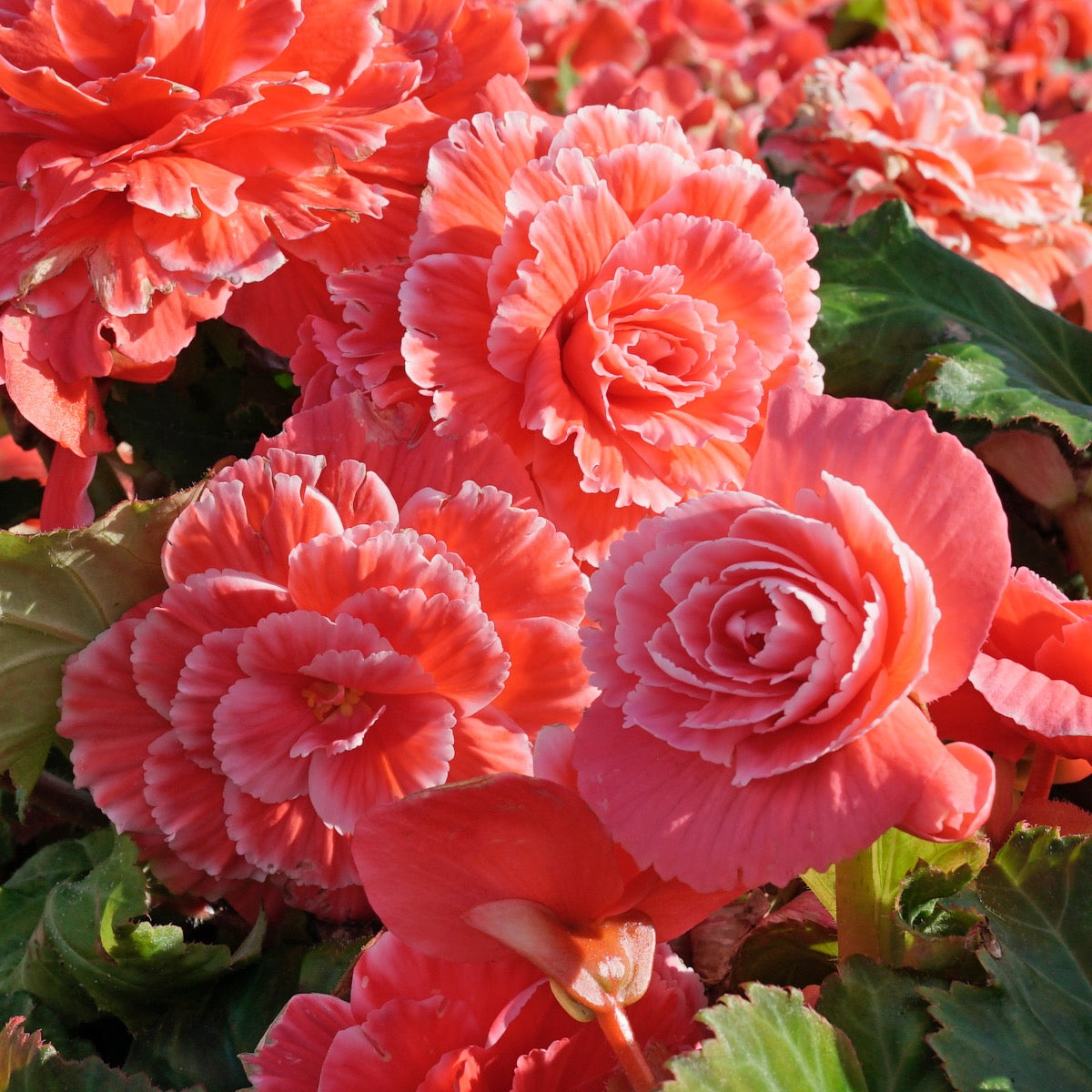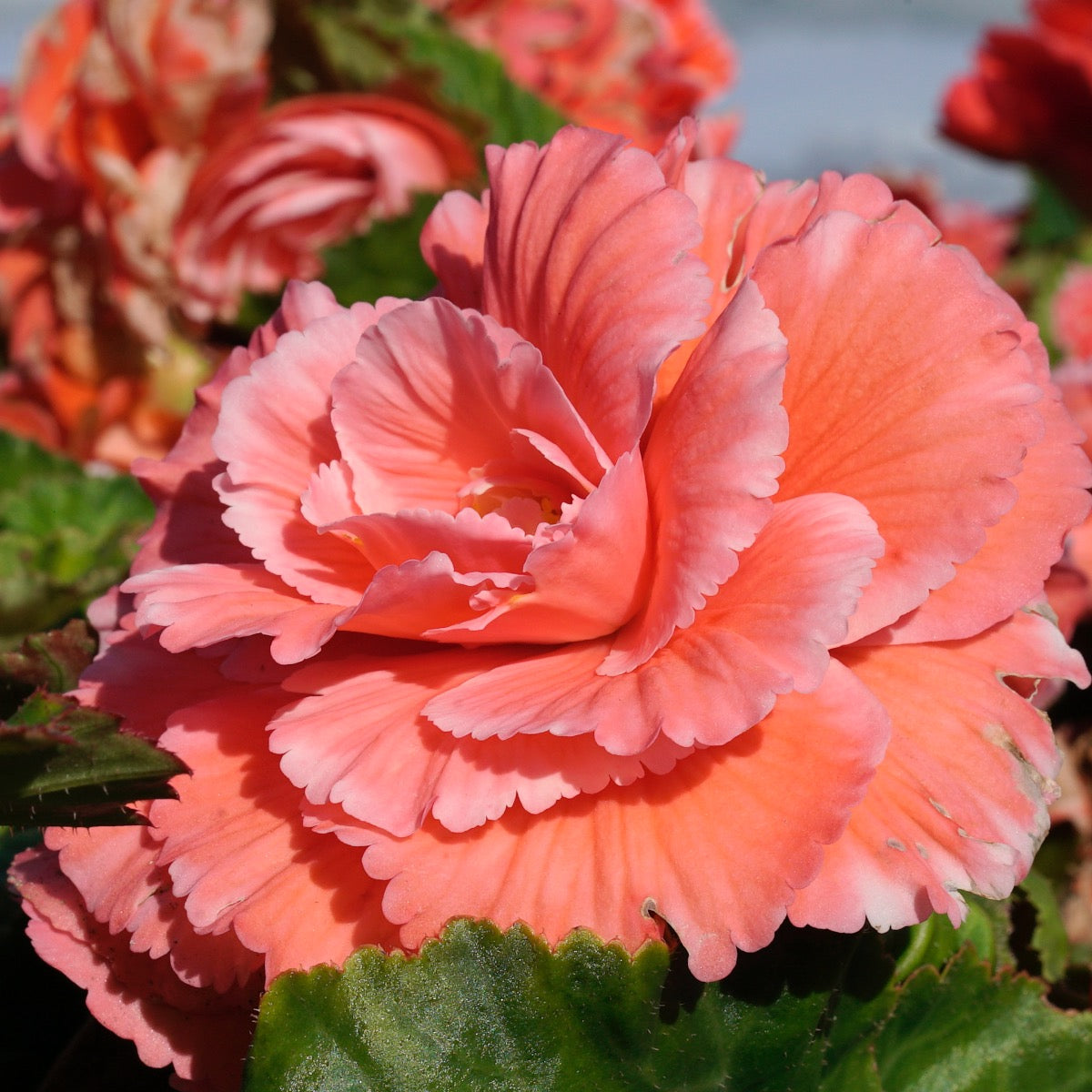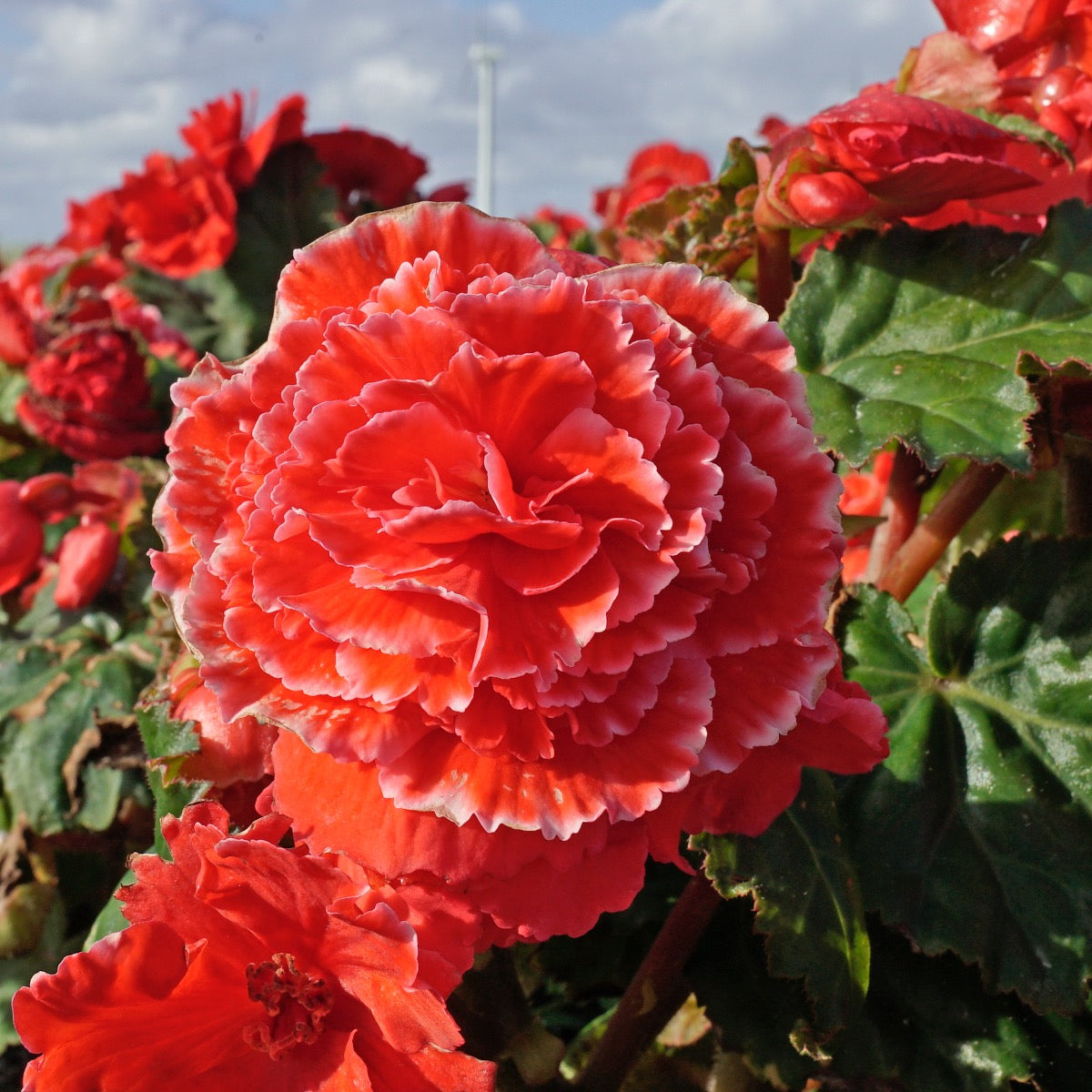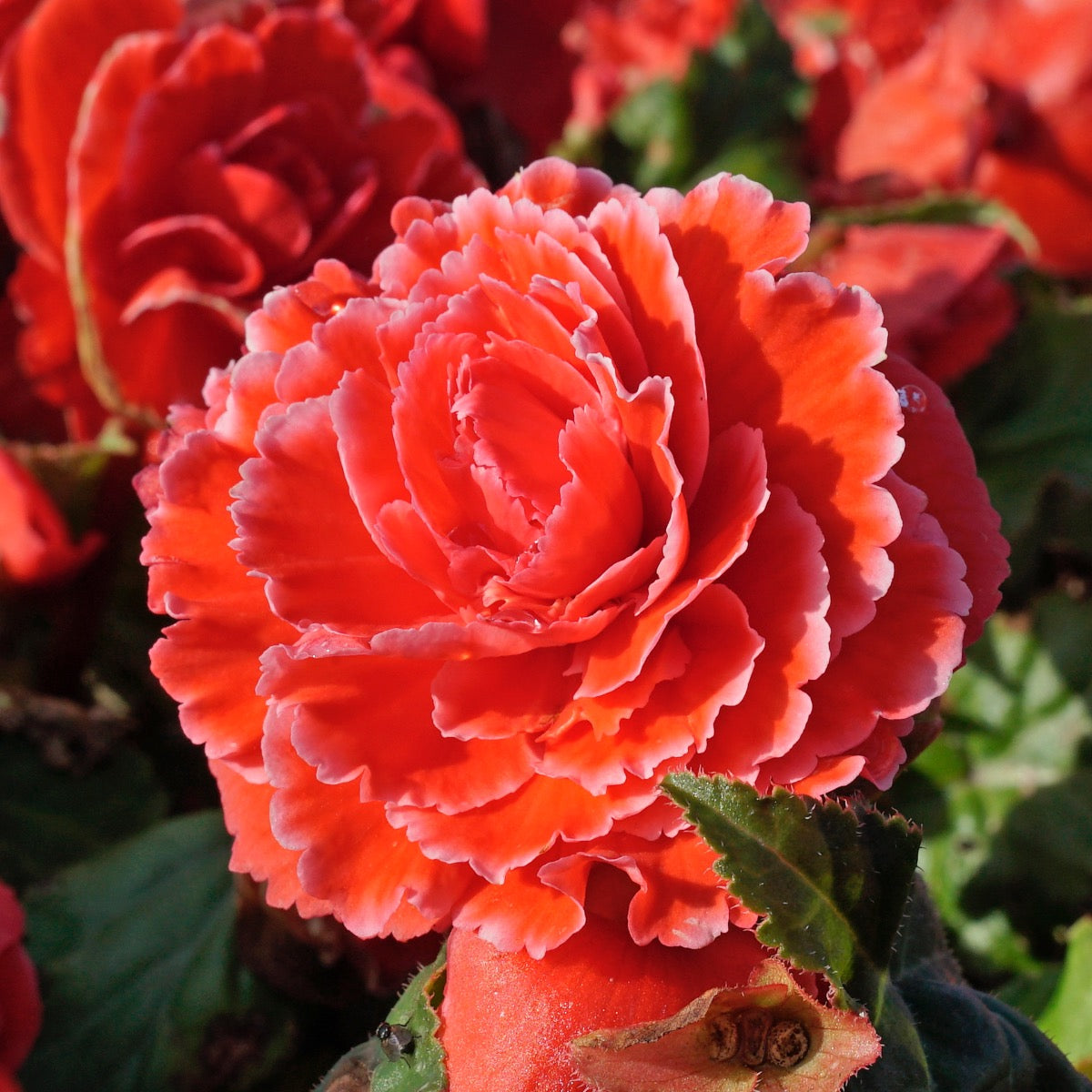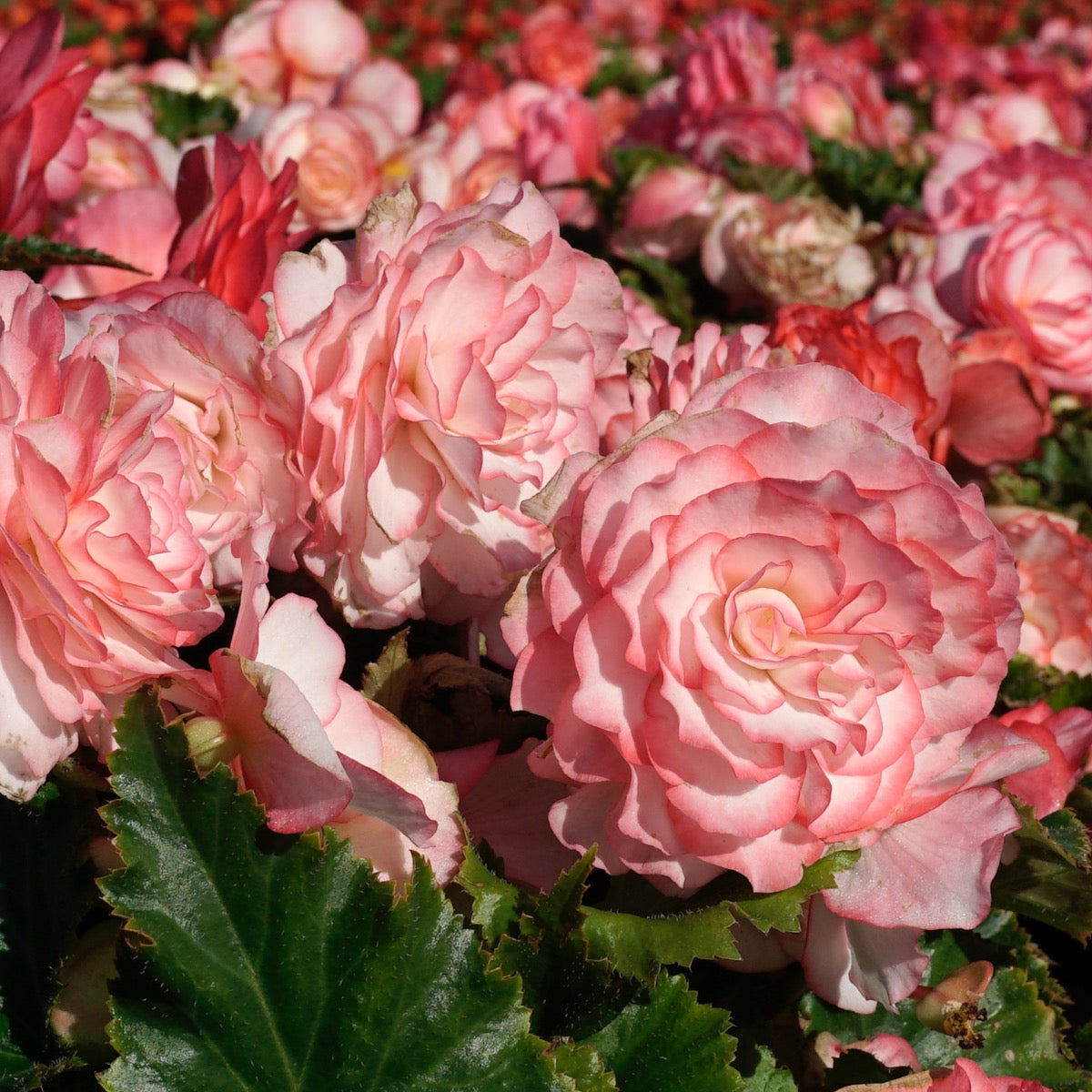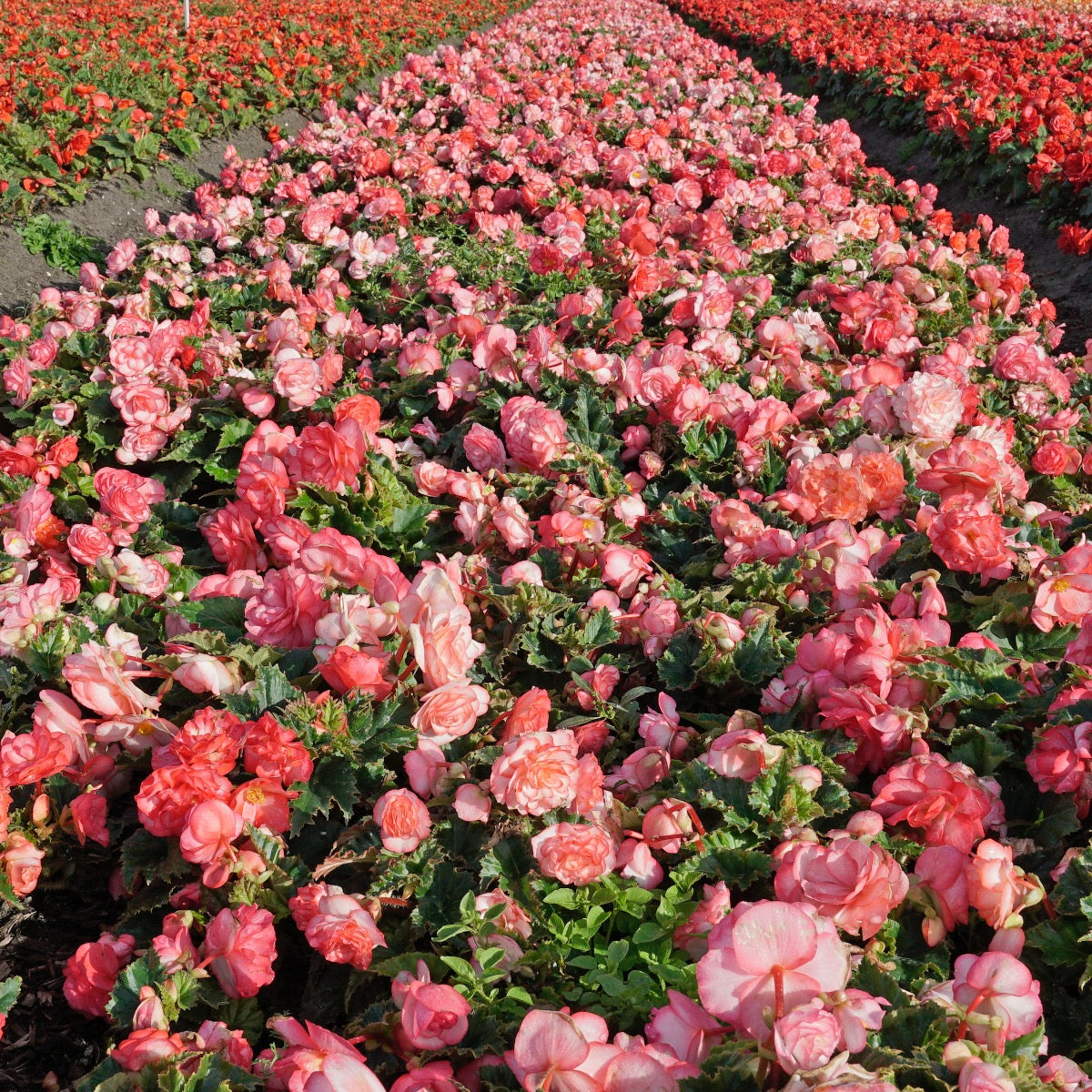
- General
- The Begonia tuber
- Begonia plants
- Preparing the Begonia
- Begonia in pot
- Location
- Soil type and care
- Digging up and storing begonias
- The flower of the Begonia
GeneralThe Tuber Begonia… it's back in fashion.

Actually, our grandparents weren't that crazy, the Begonia is simply beautiful. It's hard to find a flower bulb that blooms as gratefully and colorfully as the Begonia. Fortunately, more and more garden lovers are rediscovering the Begonia tuber and you see it being used more and more. Not only as a pot plant, it is also increasingly being planted in borders and parks. And it almost always steals the show with its colorful appearance and excessively long flowering period.
The comeback of the Begonia is largely due to the Fa AF Kolken & Zn from Dirkshorn in North Holland. After cultivation had virtually disappeared from Belgium and the Netherlands, the Fa Kolken picked it up again. They scoured the world to find the best Begonias for the garden and balcony and passionately started cultivating and promoting them. Their searches have resulted in a fantastic range of very strong and richly flowering tuber Begonias in many colours and shapes.
The newest Begonias in the Kolken collection are the so-called Ameri-hybrids. This is a series of Begonias specially selected for their good garden and pot properties with more colorful and larger flowers than the existing range. These Ameri-hybrids are also the Begonias that we offer in the Fluwel web shop and I advise you to try them once. I am used to a lot but these Ameri-hybrids really surprised me with their intense colors and rich flowering. And truly amazing how easy it was to get them to flower, what a grateful bulbous plant.
The Begonia tuber
A Begonia tuber will certainly not win a beauty contest, it does not look good. A hairy, untrimmed piece of stubble tuber where you cannot distinguish the front from the back. However, you should pay close attention when planting because the Begonia tuber does indeed have a top and a bottom. There is almost always a hollow and a convex side to be seen on the Begonia tuber. The hollow side is the top of the tuber. This should point upwards when planting. This is easier to see later in time, because then the first red-coloured growth points will appear in the hollow of the tuber.
If you try your best you will always see the concave and convex sides. If you are still in doubt when planting you can always plant it on its side. This is not optimal, but always better than planting the tuber upside down.
Planting Begonia
The Begonia tuber is planted with its hollow side facing upwards. You plant the Begonia shallow, there only needs to be a thin layer of soil on top of the tuber; 2 centimetres of soil on top of the tuber is sufficient. Keep a planting distance of 25 to 30 centimetres in the border. Make sure that the soil remains moist during the growing season of the Begonia. A Begonia does not root very deeply like many other plants and flower bulbs do, so keep the top layer moist.
Also in a pot you plant the Begonia with 2 centimeters of soil on top of the tuber. Do not use too small pots because a Begonia in full bloom is a large plant that uses quite a lot of water. By using a large pot you create a larger buffer for the water and it dries out less quickly.
Preparing the Begonia
Real Begonia lovers almost always choose to force their Begonias. Forced flowering is the early start of the growing season, which will cause the Begonias to flower earlier. You do this by planting your Begonia tubers in March in pots with potting soil and placing them in a light and somewhat warm place in a greenhouse, conservatory or on the windowsill. As soon as the risk of night frost has passed, the tubers are removed from the pot and planted in the garden. Begonias that you want to grow in pots are planted in the right pot immediately when you force them. This force is actually exactly the same as with the Dahlia .
One point of attention when you bring the pre-grown Begonias outside is the bright sun. Indoors or under glass the leaf becomes somewhat softer in structure and if your Begonias are suddenly exposed to bright sunlight the leaf can burn considerably. It is best to let the Begonia plants harden off for a few days on the shady side of your house before they go into the garden or on the terrace.
Begonia in pot
For a colourful plant on the terrace, balcony or patio, the Begonia tuber is the ideal flower bulb. Nothing is more beautiful than a Begonia in a pot; attractive, decorative shiny leaves with a beautiful colourful blob of flowers that continue to bloom for an unimaginably long time in the brightest colours with fantastic flower shapes. Each flower itself only blooms for a few weeks, but the Begonia tuber continues to produce new flowers until the weather becomes too cold and too dark.
If you plant a Begonia in a pot, make sure you use a fairly large pot. Not because the tuber needs so much space, it is more for the water. A larger pot has a larger water buffer that the thirsty Begonia benefits from. If you use a larger pot, you will also need to water less often.
Also keep in mind that you don't fill the pot to the brim with potting soil. Leaving an inch of space under the rim of the pot makes watering much easier.
Location of the Begonia
It is quite easy to find incorrect information about the Begonia on the internet. For example, the Begonia is said to not be able to tolerate bright sunlight. This is true for a large part of the Begonia family, there are many types of Begonias that like shade. However, this does not apply to the tuber Begonias that we offer, the so-called Ameri-hybrids. Ameri-hybrid Begonias can tolerate sunlight very well, even in the hottest part of the day. With a lot of light and warmth, these Begonias grow better and will flower more abundantly.
The same applies to humidity, which is also often written about as being high. The Begonias that we offer in the Fluwel web shop are selected for their good properties and to grow well and flower richly under European conditions. For rich flowering, it is important that you plant the Begonia in a sunny, light spot in the garden. The Begonia can certainly tolerate some shade, but for a profusely flowering compact plant, light is really important.
Soil type and care
The Begonia tuber likes a nutritious soil that is rich in organic material with a good water management. A fully grown Begonia tuber is a thirsty plant, it does not root very deeply so make sure the soil remains moist. Especially in full bloom, a Begonia can quickly become too dry. Keep a close eye on this if you have the Begonias in pots. With a good humus-rich garden soil, fertilizing is not really necessary for the Begonia. If you have doubts about this because, for example, you find the leaf color too light or because you do not think they look fresh, you can always fertilize with dried cow manure pellets.
Digging up and storing begonias
The Begonia tuber is a bulbous plant that you can enjoy for years. However, you have to dig it up every year, because overwintering in the ground is not possible in our climate. The Begonia tuber cannot withstand frost and our winters are often too wet, causing the tuber to rot.
When the leaves die off it is time to dig up the Begonia tubers. This happens when the nights get colder. The Begonia tuber can easily tolerate a few night frosts, it is not as sensitive to frost as the Dahlia, but if the frost in the ground reaches the tuber it will freeze.
When harvesting, cut the stems a few centimetres above the tuber, at a later stage these pieces of stem will dry off the tuber by themselves if they have not already fallen off the tuber when harvesting. After harvesting the tubers, carefully knock the excess soil off the tuber, it is not necessary to clean the hairy tuber completely.
Then store the tubers in a frost-free place as you do with your Dahlias. The Begonia tuber does not need to be wrapped like the Dahlia to prevent drying out. Store it airily in a box or crate at a temperature between 5 and 10 degrees Celsius. In March you can plant the Begonia tubers in pots again to force them or you wait until April, beginning of May, to plant them in the garden.
The flower of the Begonia
A fun fact about the Begonia flower is that the male flower is always accompanied by two ladies. If you look closely, you will see that there are three flowers on each flower stem. The middle one, also the largest, is the male flower. Next to it you will see two small, single flowers, these are the female flowers.

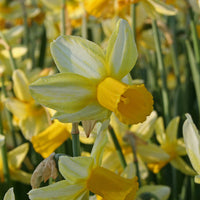



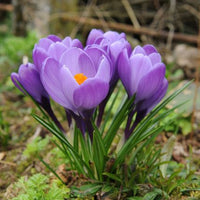




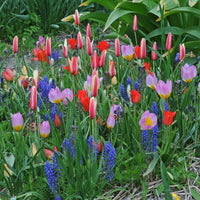


 Deutsch
Deutsch English
English